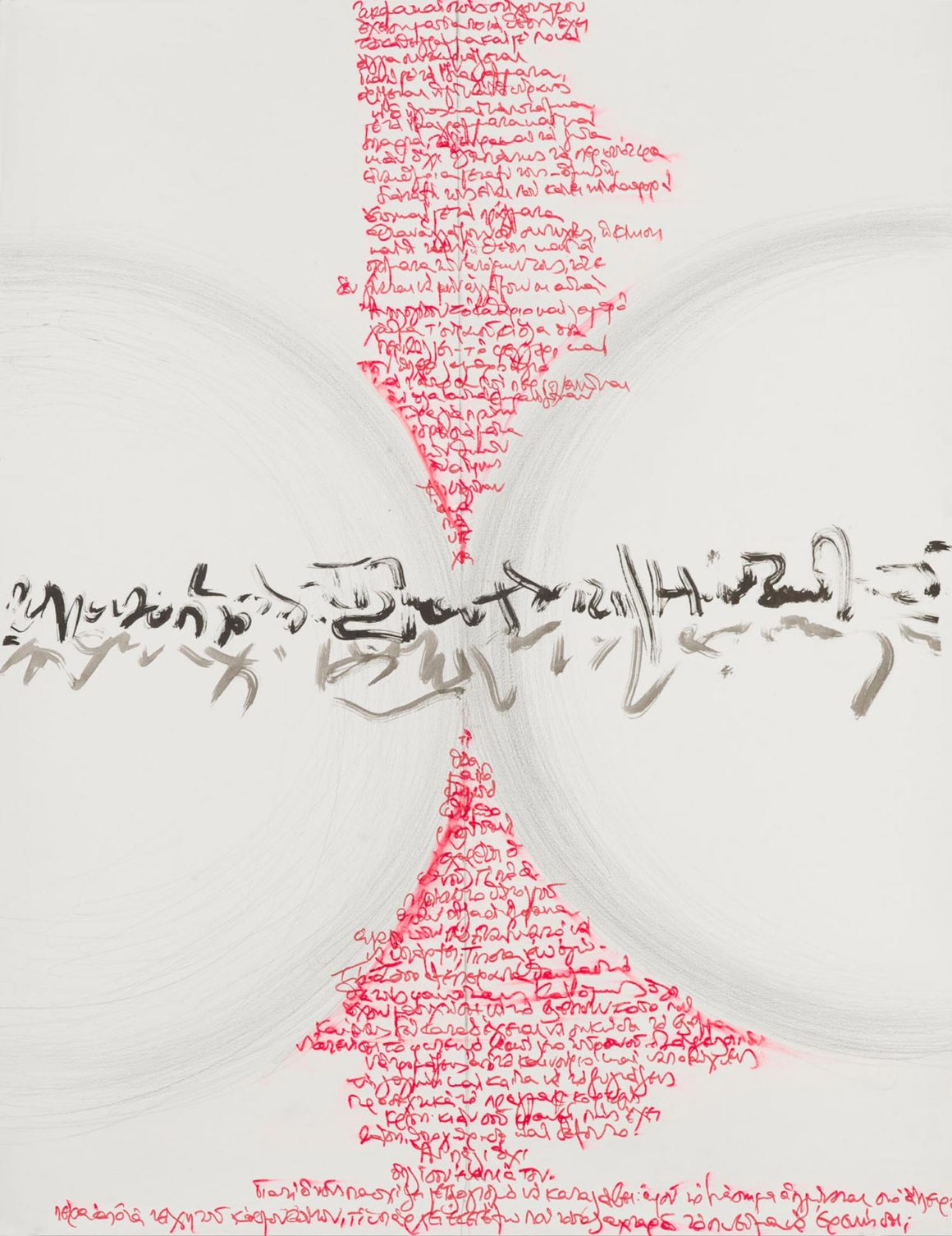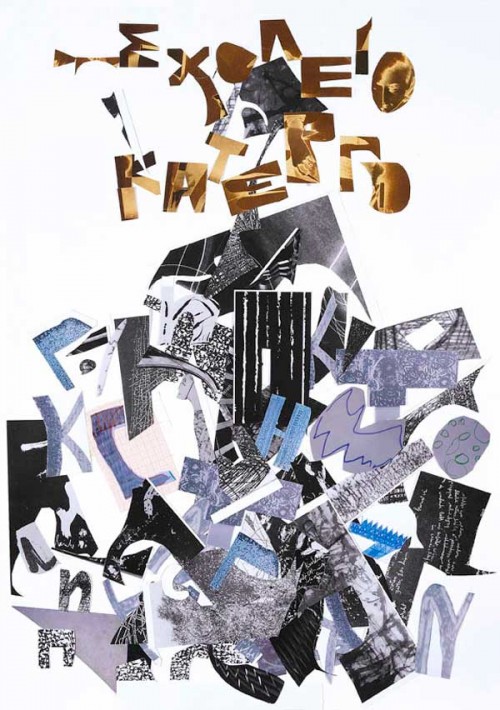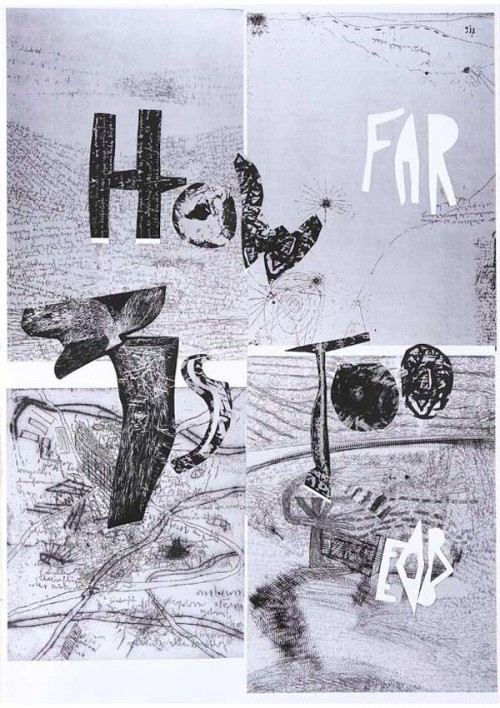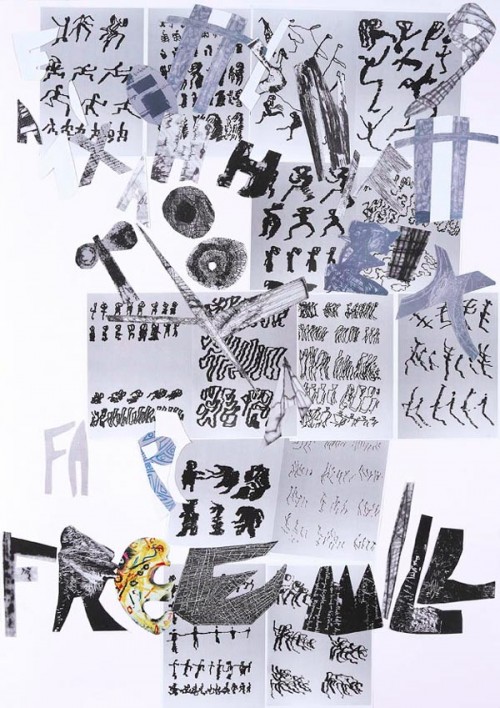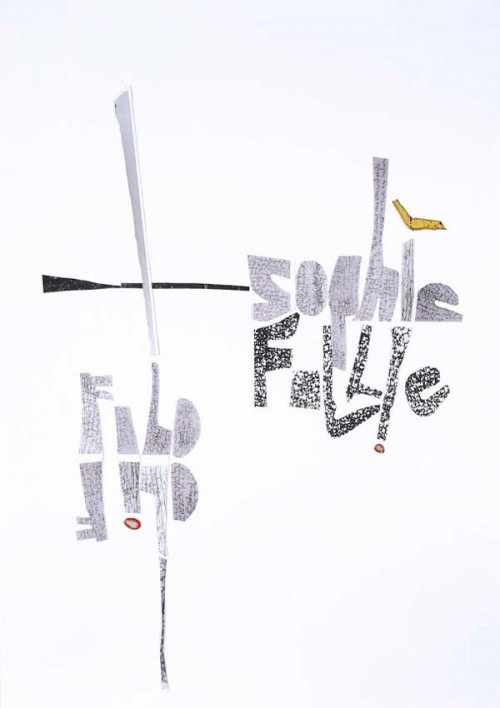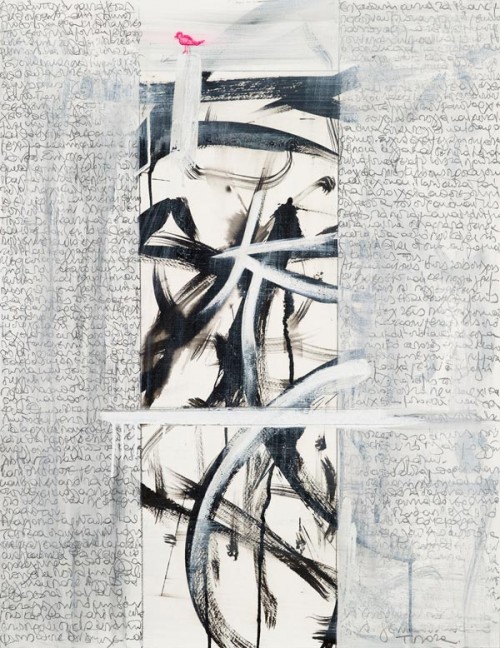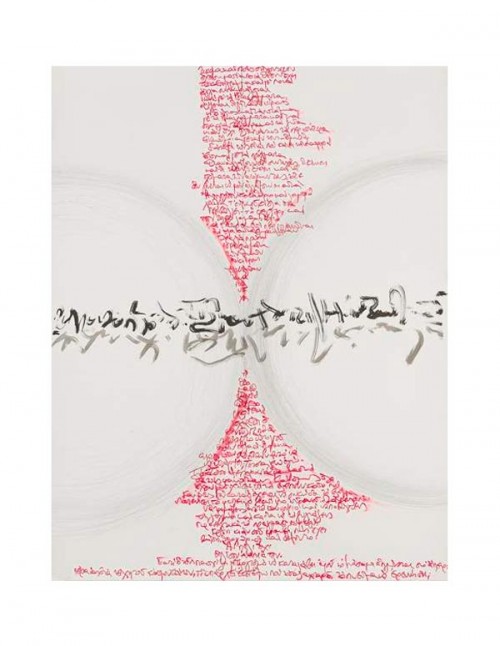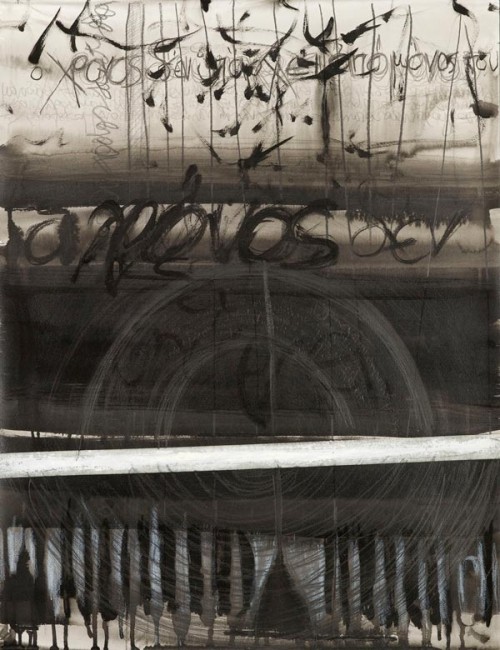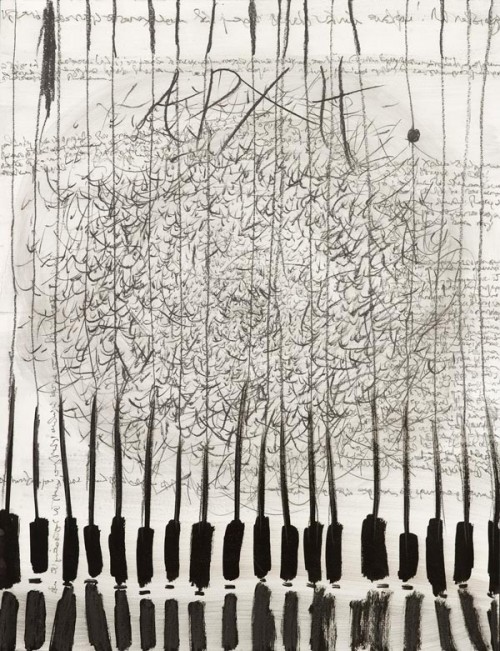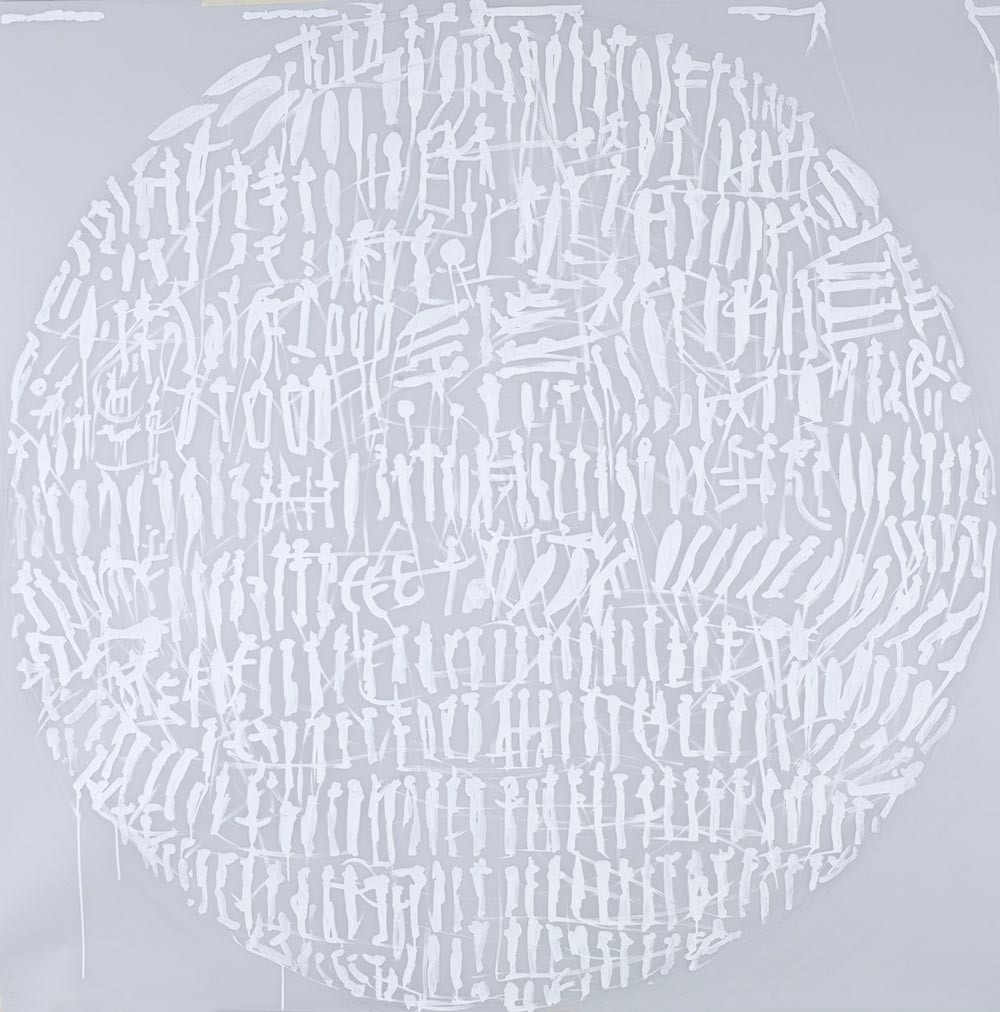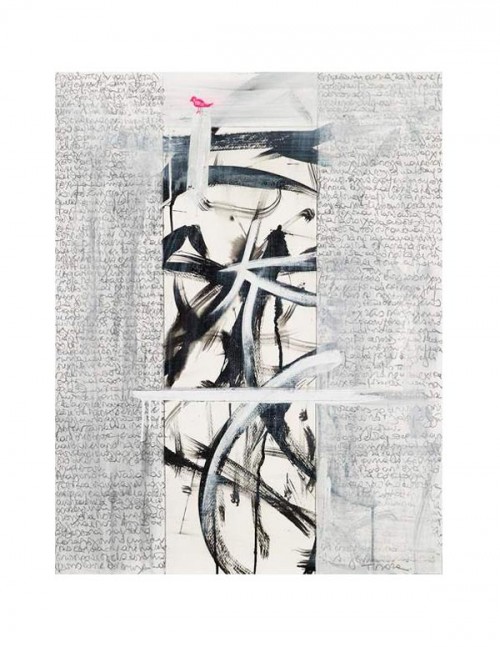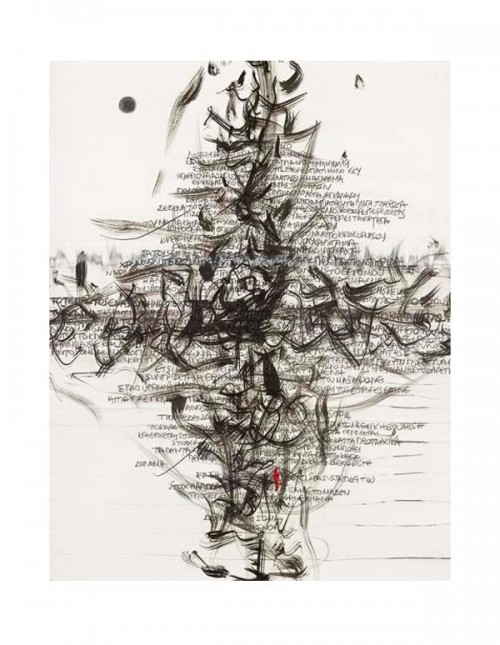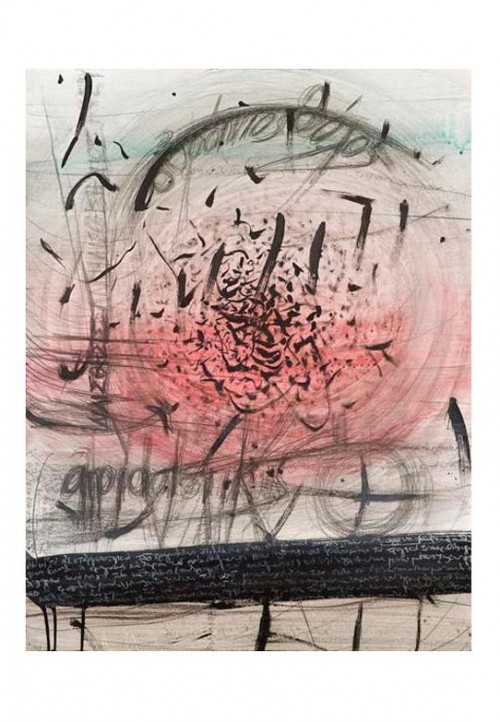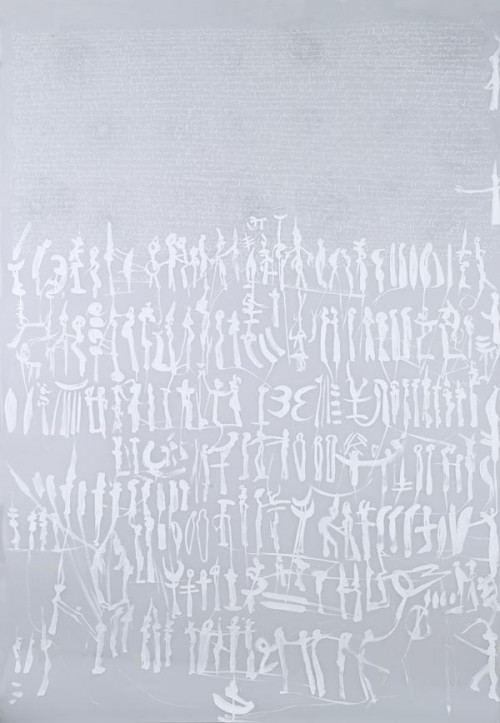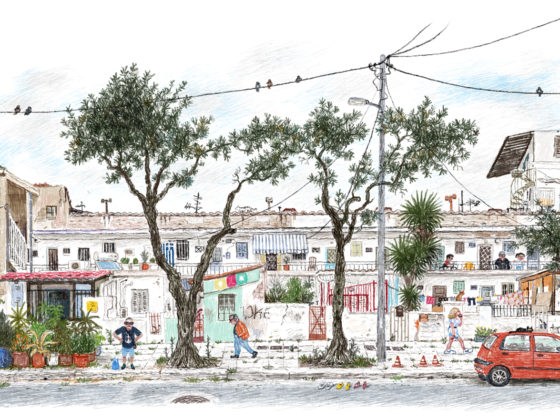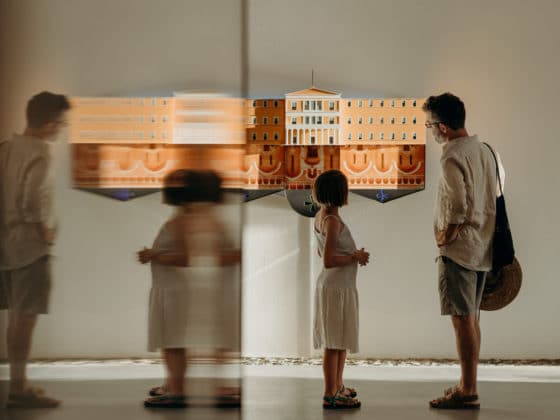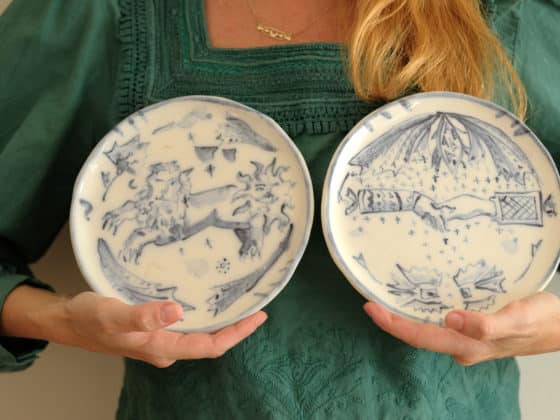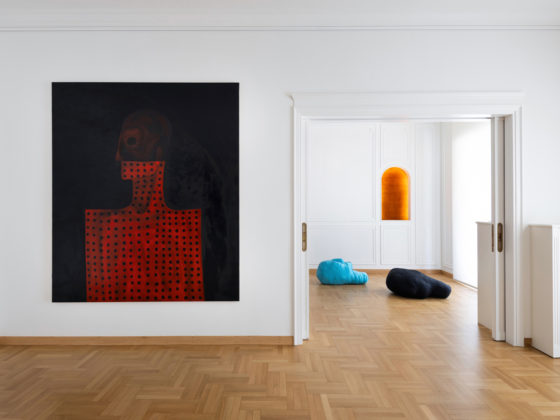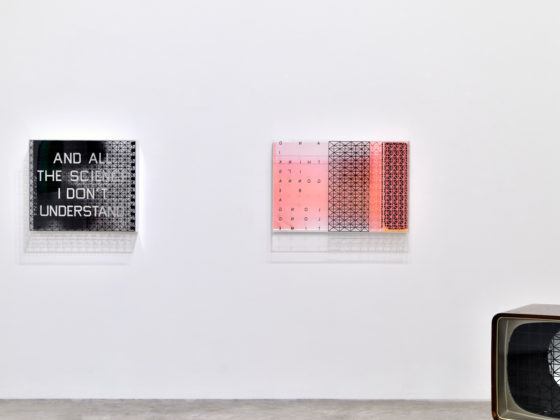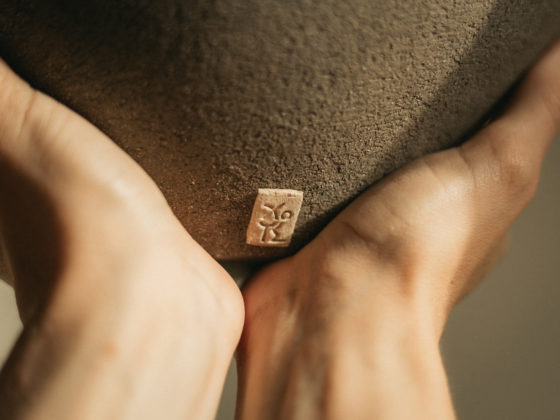The collages of Eleni Zouni, titled Letterforms, depict words and phrases shaped out of the manipulated reproductions of works by Henri Michaux, Jackson Pollock, Carlfriedrich Claus, and Pierres Soulages: they all shared an interest in abstraction, calligraphy, and automatic writing. As the artist herself points out, her Letterforms act as conduits for emotions and ideas, and as vehicles for getting messages across, at the same time that they are being assembled on paper in the manner of ideograms.
In her collages the artist uses the fragment to create images that are meant to serve as a warning. Bearing titles such as Perspectiva, Cyberpunks, Tele-surveillance, and Babel, which are a direct reference to the Information Bomb by French thinker Paul Virilio, these collages are concerned with the de-regulation of the gaze and evoke an almost palpable sense of urgency. The artist’s treatment of writing in terms of its visual potential reveals a lot about how she perceives reality and her own place in it.
Her paintings, which were created especially for the spaces of the Epigraphic Museum in Athens, are tokens of the ‘rhythmic unity’ of automatic writing filled with a sense of lyricism that seems to pour forth from her rendering of calligraphic forms. Through her use of pictographic lines, calligraphic dots and text in white the artist draws attention to the reciprocity between painting and writing. Ancient inscriptions in stone and their modern counterpart on transparent paper are the two halves of a twin existence inhabiting the spaces of the museum, whose dynamics is the result of a delicate equilibrium between the emblematic materials and mindsets of different historical periods.
Zouni’s works contain many layers of meaning: on the one hand, they point to the topical nature of ancient script and its continued relevance for the creative mind and its current concerns; on the other, they speak volumes about the artist’s wish to answer a set of questions that seem today to have a special resonance: is it possible to clearly demarcate the boundaries of a space made up of memories such as painting is? What happens when writing plays host to painting, or when painting becomes a context within which writing exists? Where does the influence of each on the other begin then, and where does it end?
